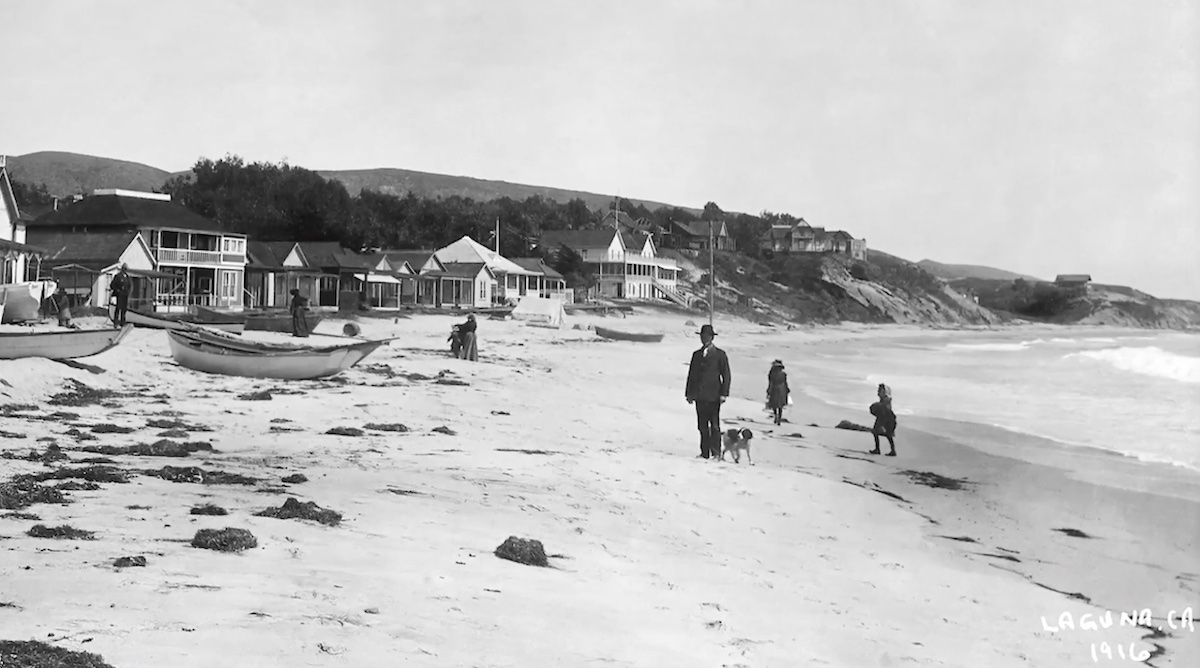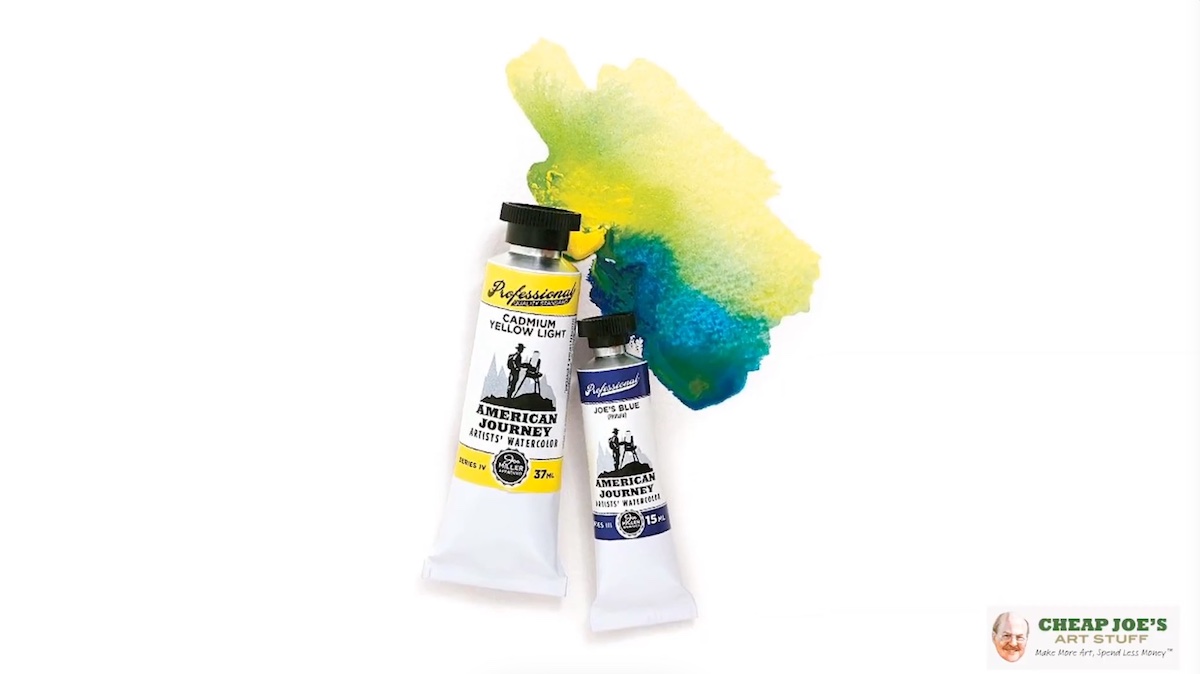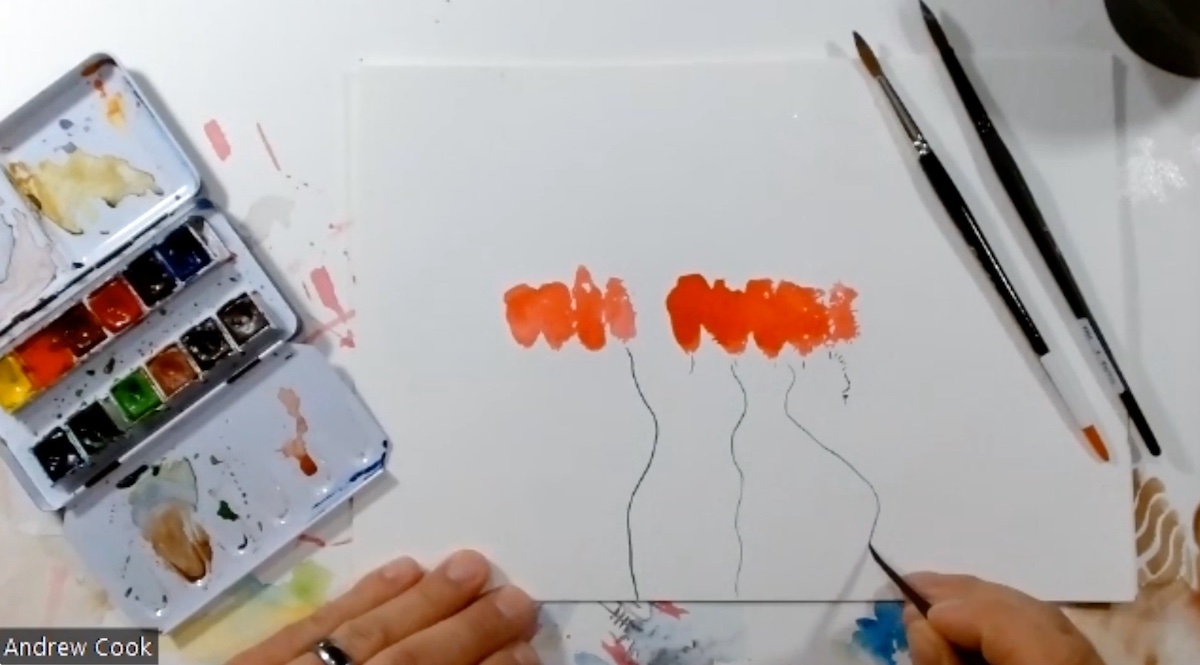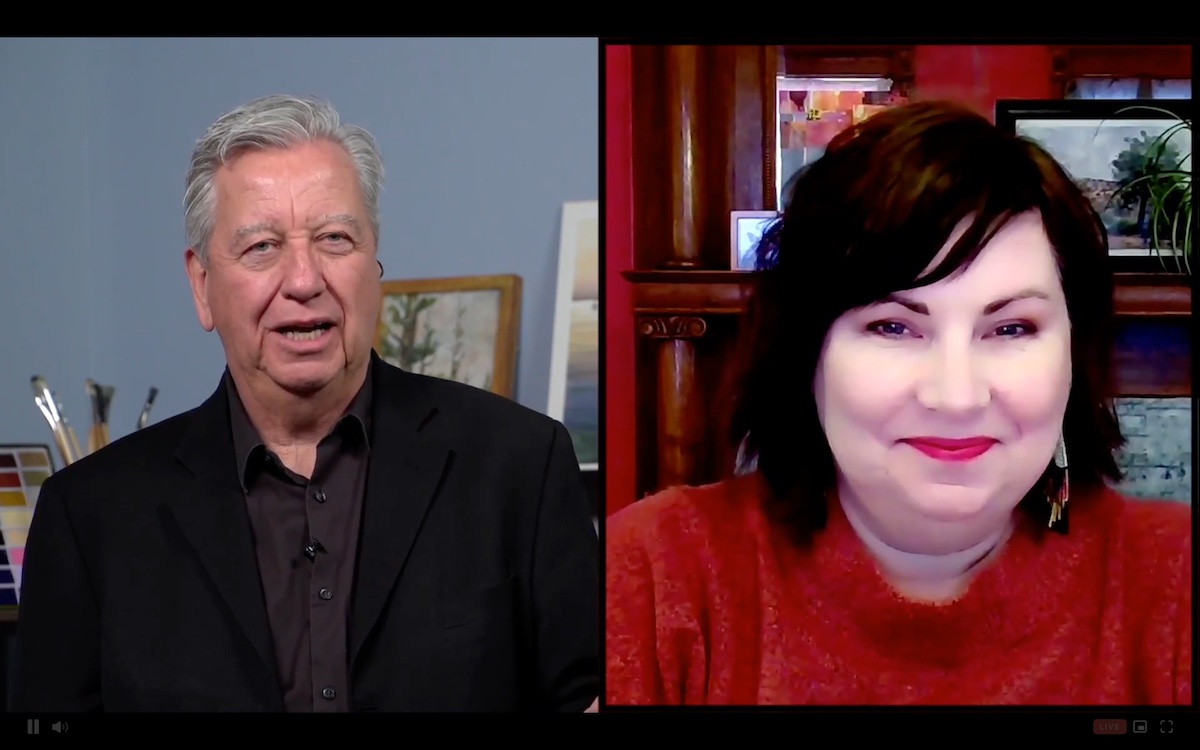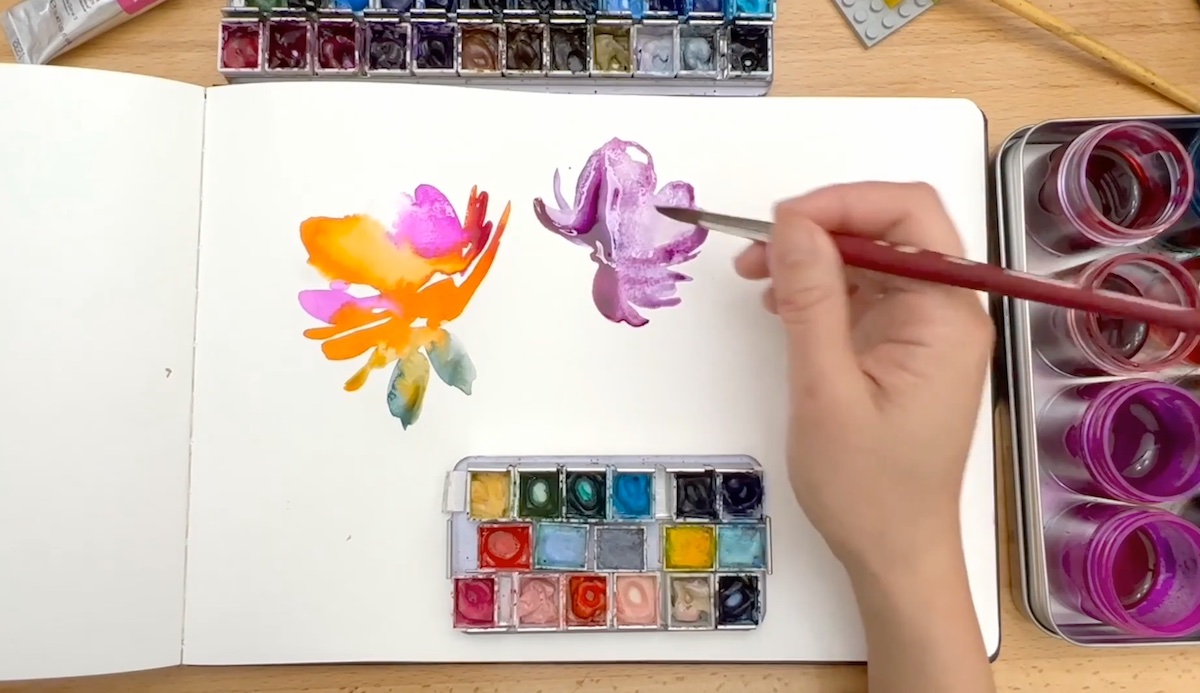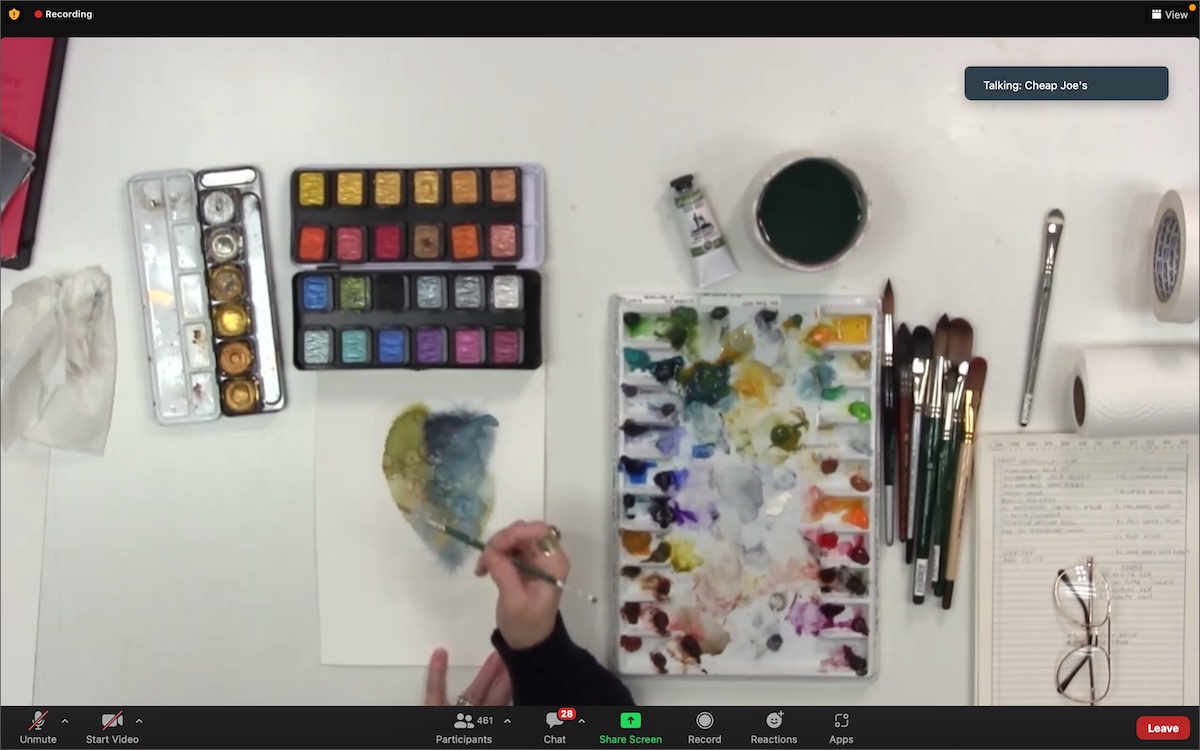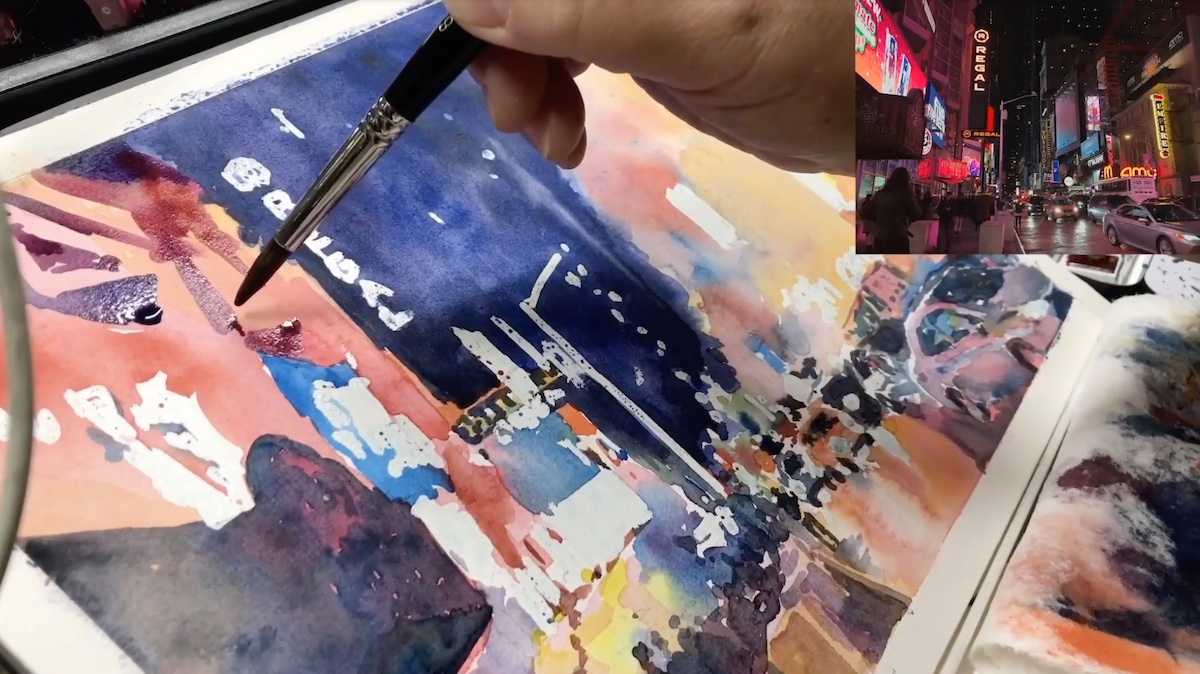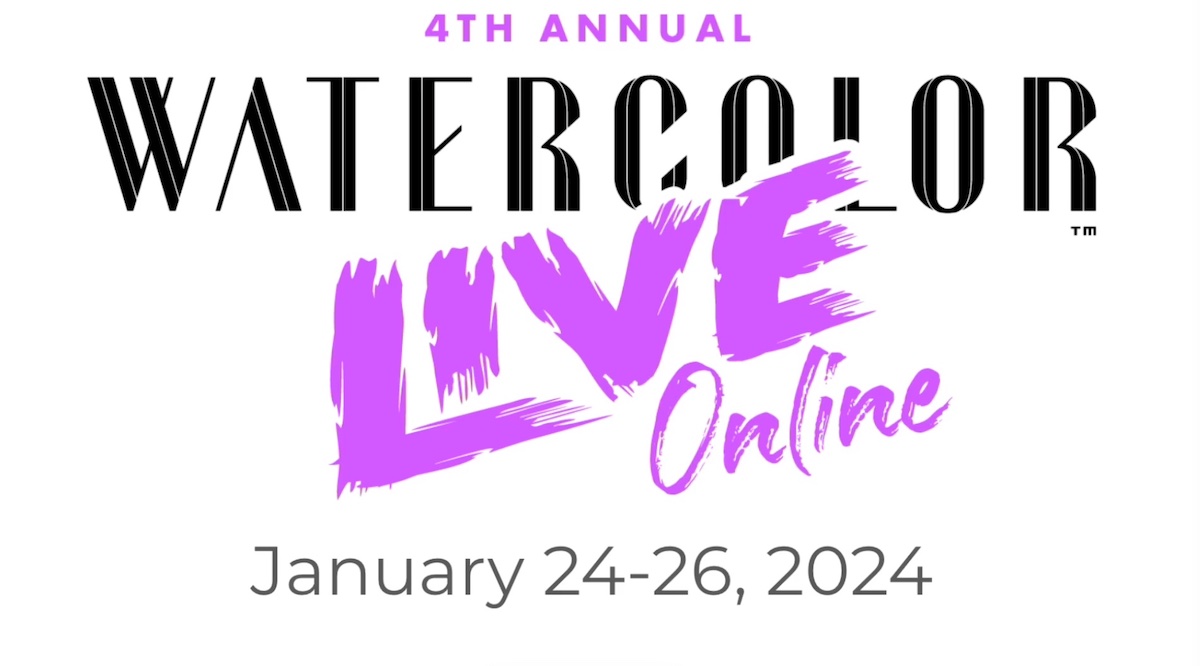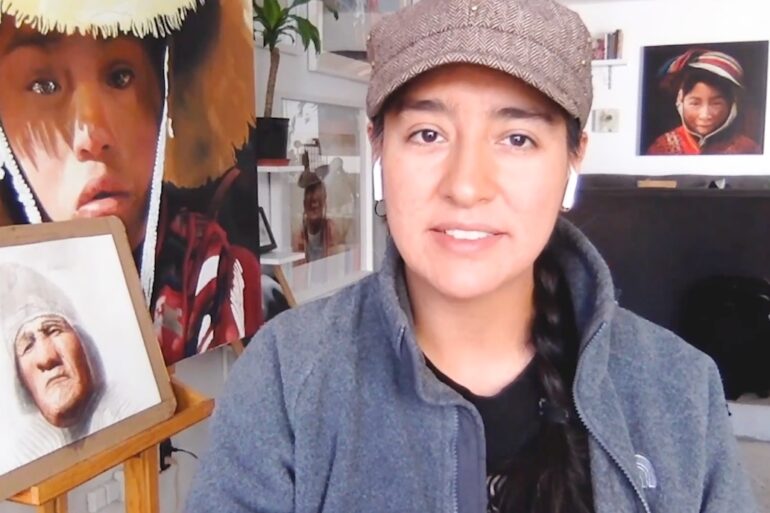
This post is also available in:

“We are here to teach you, to inspire you and to make great friends” said The Man, Eric Rhoads, tireless driving force behind all events and activities offered by Streamline Publishing, on the official opening day of Watercolor Live.
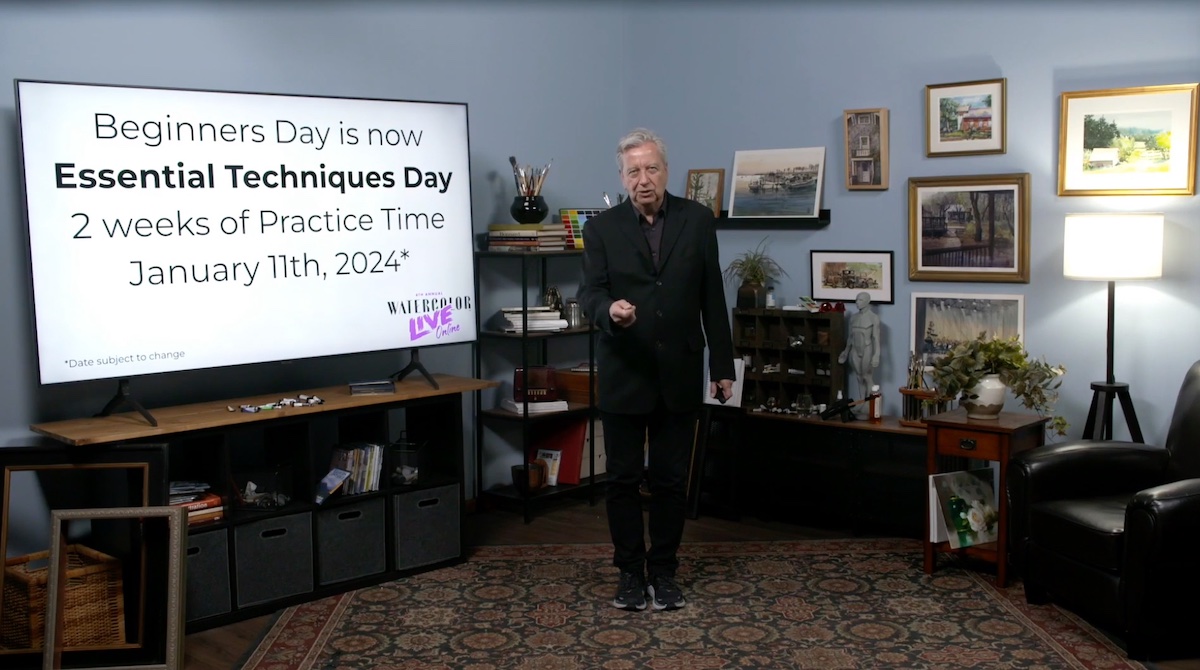
Now in its third year, the event attended by more than thirty countries scattered around the world was led, as has become customary, by The Man, Eric Rhoads and Kelly Kane, PleinAir Magazine and American Watercolor Weekly Editor-in-Chief.
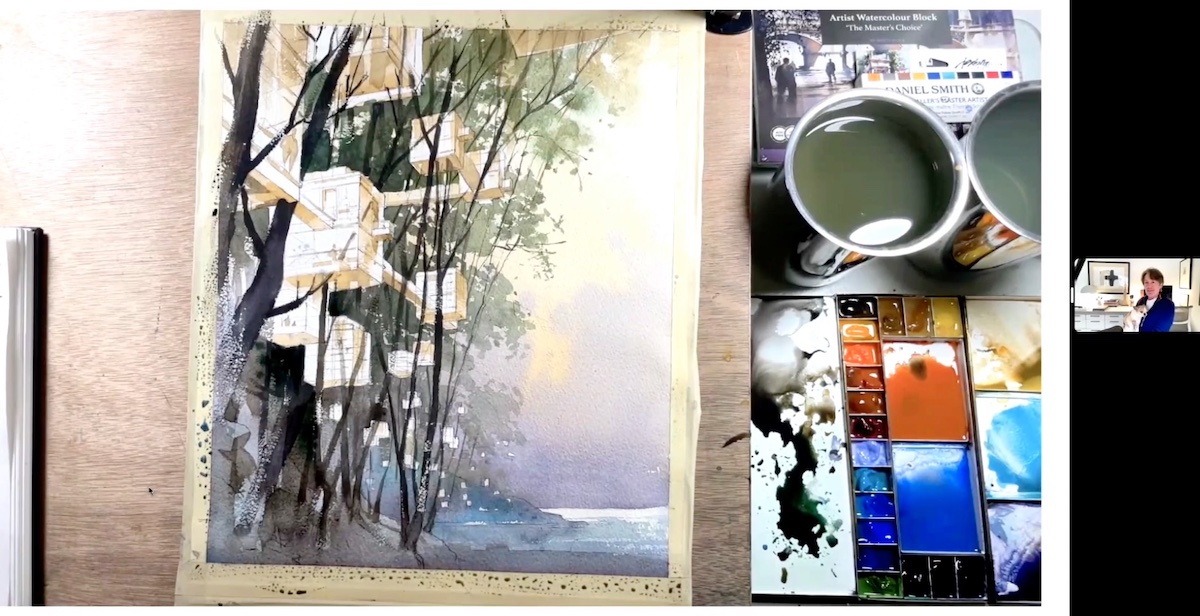
The first guest to open Acquerello Live is renowned artist and illustrator, Thomas W. Schaller. who resides in Los Angeles: a city he loves deeply, and in which he photographed the image of fireflies that inspired him.
For Schaller, fireflies represent the temporal flash point capable of projecting him back to the years of his youth, when fireflies were welcome guests in many territories while today, alas, they are rarely seen. These small, magical birds awakened a whole range of emotions and feelings that emerge clearly in each of the artist’s compositions, including that of the day, made from imagination. After a series of preparatory studies, inspired by the spiral movement of fireflies -which also recalls the Golden Ratio- the artist visualized fireflies in the form of lanterns hanging from trees, with which he created a very interesting architectural composition. The point of view from which the artist creates the composition is deliberately particular because in this way he omits to reveal overly descriptive details of the place in favor of the viewer’s free interpretation. Architecture is another characteristic element in the works of the artist, who has a long career as an architect and illustrator behind him. Painting for Thomas W.Schaller means reconnecting with life because in the act of painting his thoughts are completely absorbed in the narrative and without being intimidated by judgments or negative thoughts he surrenders to the ecstasy of painting.
Schaller’s painting technique, revolves around the collision of opposites: negative and positive spaces, light and shadow, warm and cold colors. A summation of factors that again emphasize the mystical aspect of Schaller’s works.
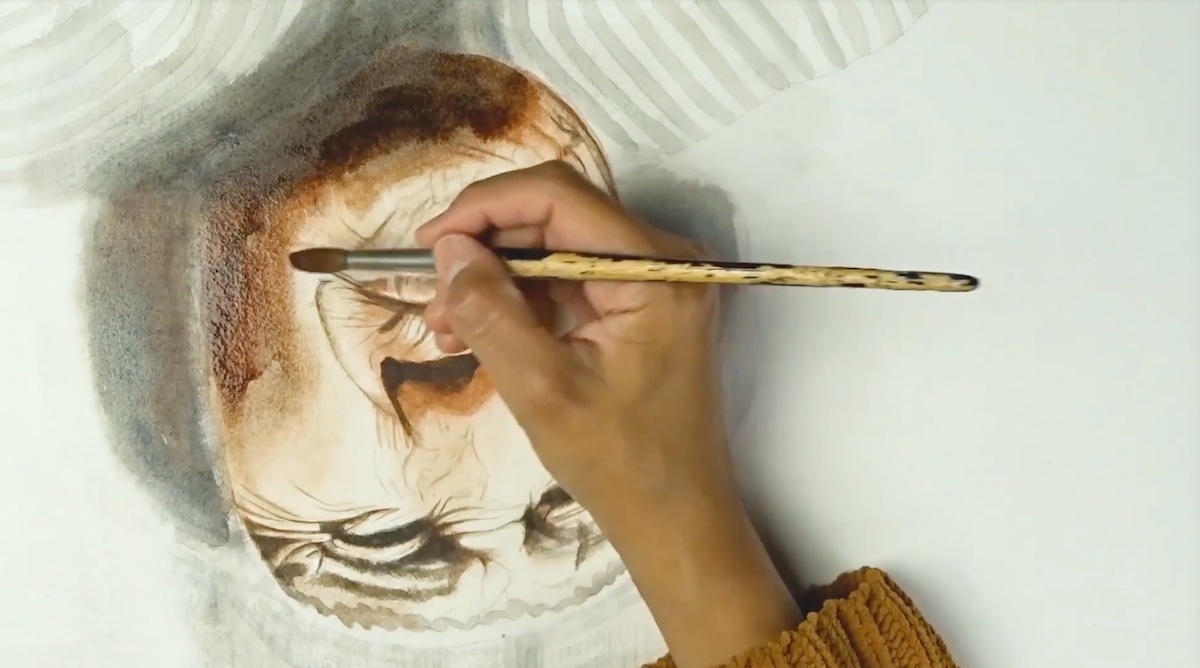
Painting is the mirror of the soul, and Patricia Guzman’s noble soul is reflected every time she paints a wrinkle of expression on the faces of indigenous people. Undisputed protagonists of her Root series, Patricia Guzman’s indigenous people are charged with the ancestral sphere that still lives in indigenous peoples and that emerges beautifully in the stylistic contrast, in which: the almost hyperrealistic definition of the face-the essence of being-contrasts the evanescence of the background and accessories-having. A contrast already pointed out by Eric Fromm, philosopher and psychologist, in his book “To Be or To Have.” Like Eric Fromm, Patricia Guzman also majored in philosophy : a valuable tool with which she delved even deeper into the meanderings of human nature with a focus on ethnic minorities.
Patricia Guzman’s love of portraiture, inspired in technique by Andrew Wyeth, also stems from the noble soul of this extraordinary artist, who learned the art from an exceptional master: her father, defined by the artist as: “a Renaissance-era man in today’s world.” With all that the term “Renaissance” implies. Her father is the artist who meticulously taught her all the secrets of art that she later decided to pursue by seeking the beauty of realism with the watercolor technique.
During the technical performance Guzman described the technical steps taken with an extremely transparent multilayers paint to which she gradually adds pigment in successive layers until the rough composition is completed. Moreover, in her always calm and “reassuring” voice, she reiterated the importance of using a thick, 100 percent cotton paper: the only one capable of holding up the dozens of layers laid down, which must be perfectly dry before each pass. When the portrait was finished, she emphasized the details by helping herself with a strictly dry brush with which she brought out the characterizing details of the face.
Guzman’s was a demonstration session combined with meditation that, thanks also to her calm and soothing voice, led participants through the meanders of her, profound, creative process combining technical notions with cultural and anthropological notions of considerable depth that won over the audience.
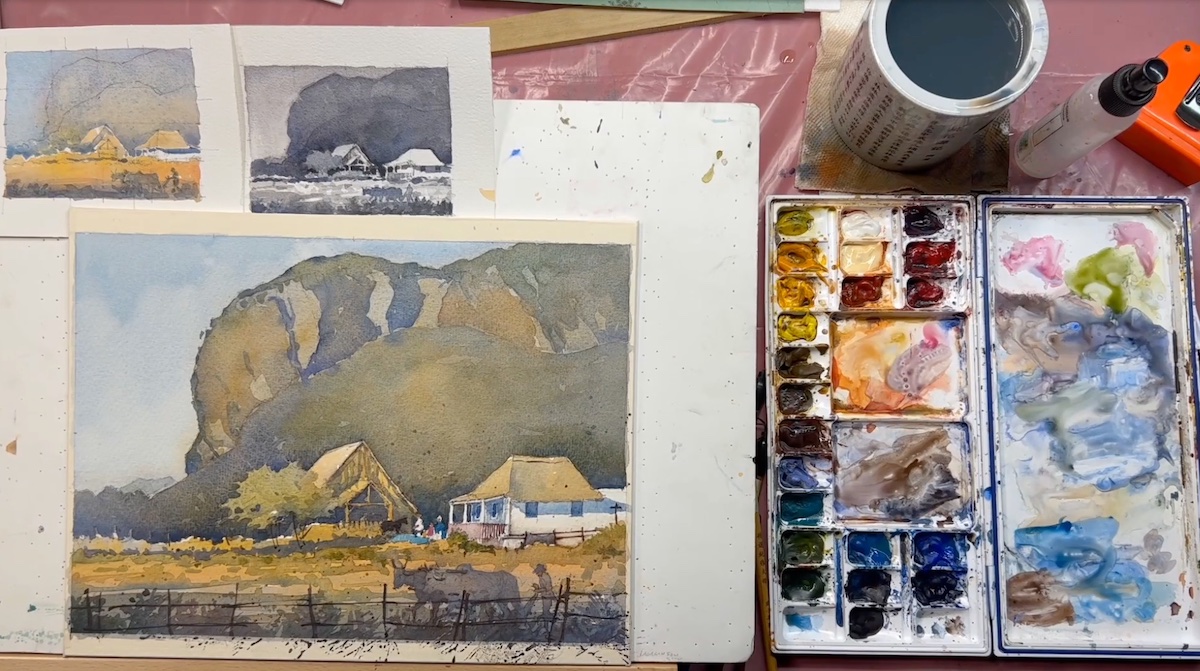
For Richard Russell Sneary, watercolor landscape painting is the indelible mark capable of capturing and summarizing travel memories and feelings assimilated into the history of the place visited.
Such is the case with the photograph selected for the daily demonstration and taken personally in 2020 during a trip to Vallee Vinales in Cuba and depicting a reality that characterizes the island: tobacco factories.
Regardless of the compositional significance of Sneary’s work is the mode of execution with which he accomplishes the underpainting executed with broad washes of color with which he incorporates, hand by hand, the chromatic colors of the landscape moving from the top of the sky to the bottom of the foliage. A mode that aids in the later definition of perspective and distances made by laying down the darker colors from which the shapes emerge in a three-dimensional manner.
For the execution of the work Sneary began by making a black-and-white tonal study and a color study. On the latter in particular he experiments with possible “last minute” variations, put in place to emphasize the compositional atmosphere.
For Russell Sneary, working on a landscape in an indoor setting implies enacting unconscious mechanisms, the result of years of study derived mainly from plein-air painting, which enables him to adjust almost automatically any anomalies in the photographic rendering of images.
Sneary’s composition, made predominantly using a calligraphic brush that he moves as if it were a pencil with which he works both on large surfaces and on details, is a set of contrasts rendered by the alternation of warm and cold temperatures and by the juxtaposition of edges: sometimes soft and other times harder, which also define the compositional lines.
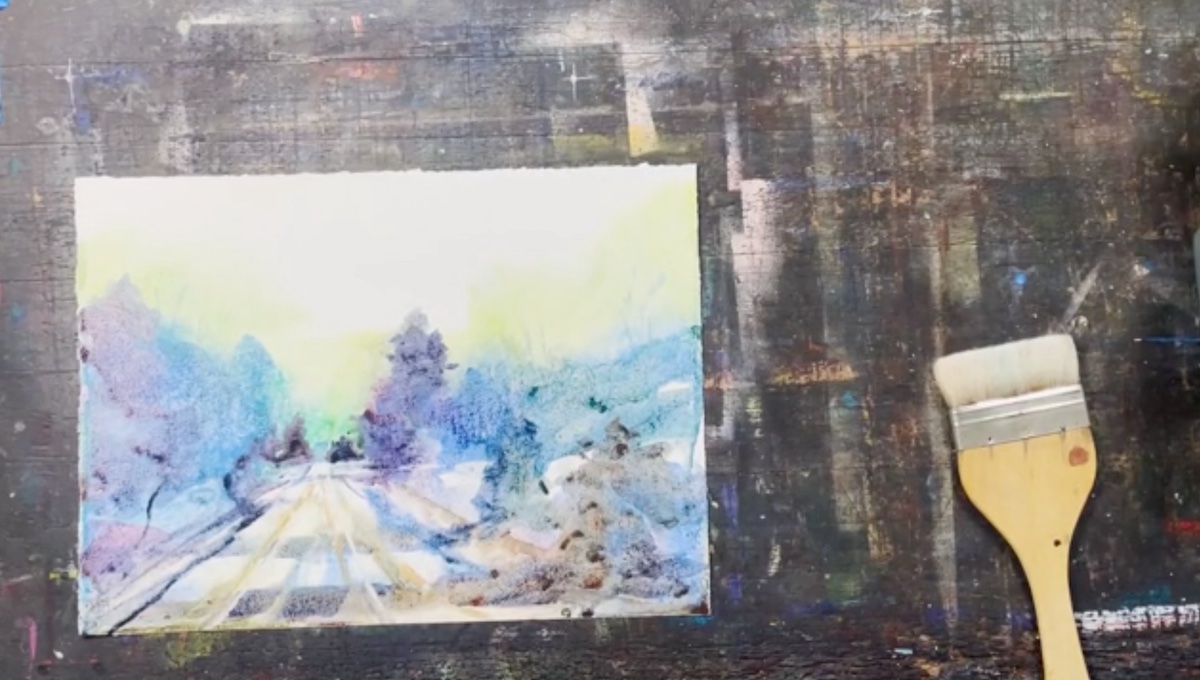
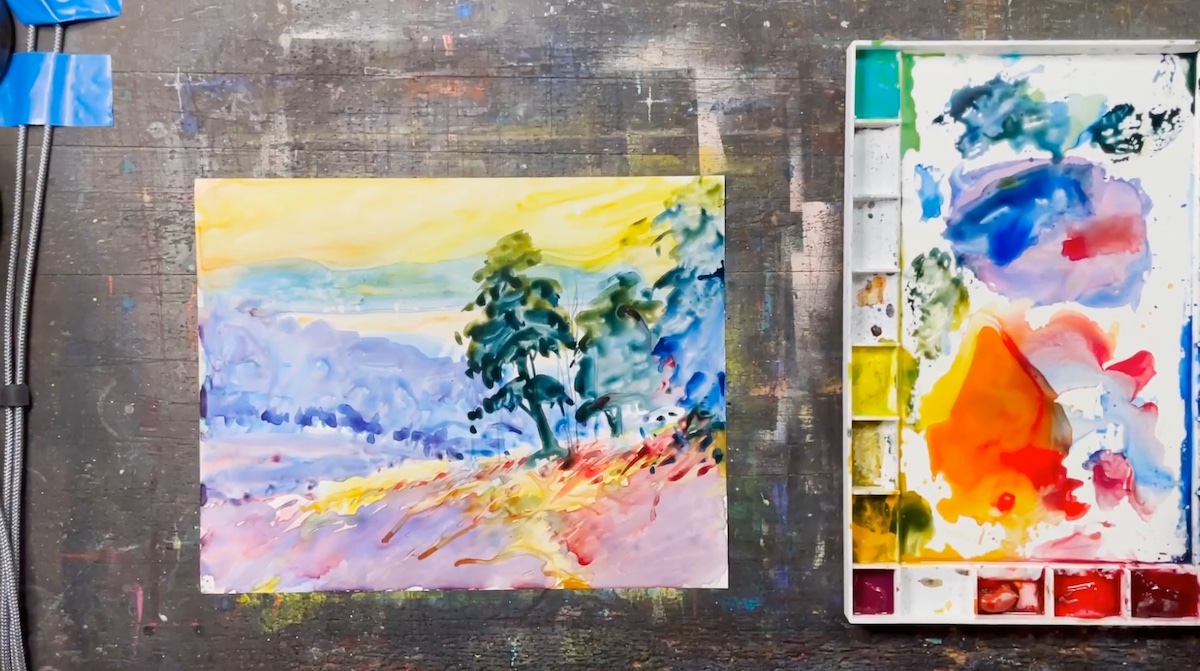
Artist Mark Mehaffey is renowned for being a fearless experimenter with transparent watercolor techniques made from different media than the traditional sheet. For the demonstration session Mehaffey did not disappoint the audience, making two demonstrations with alternative media: the first made from a d watercolor sheet on which he spread two layers of acrylic gesso that makes the surface slippery; the second using Yupo paper, an even more slippery surface.
A great advocate of artistic experimentation , Mark Mehaffe’s courage earned him the title “fearless painter.”
Mehaffey’s aim in creating the composition was to create a visually appealing landscape untethered from the mere representation of reality. Mehaffey’s skill lies, among other things, in his ability to render the sense of depth of the landscape from the tonal and chromatic values he realizes by the use of primary colors to which he adds
The compositions achieved by Mehaffey, which greatly simplifies the forms, as well as leaving the grain size of the pigments in view, are emphasized by the converging lines created in the background and which he reinforces at the end of the compositional process in a continuous back and forth between drafting and the partial removal of colors that he dampens and reactivates.
For drying the color, the artist helped himself with a hair peon, which he kept at arm’s length in the second demonstration because of the polypropylene composition of the Yupo paper.
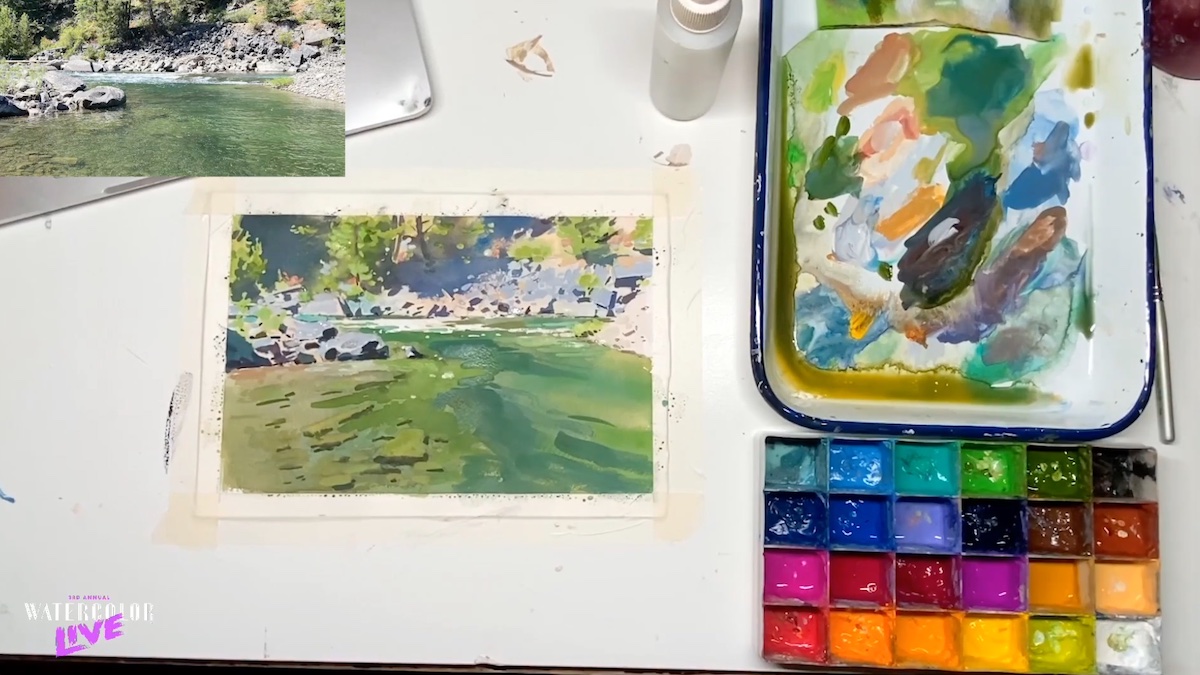
After the first two morning sessions with almost spiritual overtones, Mehaffey’s was only the first of the “revealing” demonstrations that continued later in the afternoon sessions.
In fact, rock star Mike Hernandez, who specializes in gouache painting, demonstrated to participants how it is possible to use lil his favorite medium, in a manner quite similar to watercolor.
Gouache, could be considered the “heterozygous” twin sister of watercolor from which it differs, not only in the opacity that characterizes the medium but also in the wide spectrum of colors that unlike it, watercolor is able to offer. With a little shrewdness and a great deal of knowledge, the artist showed the audience how to exploit the full potential of gouache by releasing it from the limiting preconception of opacity to the point of achieving results of transparency easily assimilated to watercolor. It was a demonstration that expanded the properties of the medium and sparked the enthusiasm of the audience, which has always regarded gouache as a medium complementary to watercolor and never replaceable.
In the representation of the photographic image, taken during a trip to Whidbey Island, the artist in a talkative and detailed dialogue with the audience created a composition composed of 80 percent transparency and 20 percent opacity. During the compositional process he explained similarities, differences and ways to derive the transparency property in gouache, which maintains a more vivid and saturated pigment, compared to watercolor. In the compositional process, Hernendez used exclusively flat brushes that helped him in defining the hard edges of the rocky composition in the background and, as a final touch, brightened the light reflected on the water with white gouache. A very intense demonstration in terms of content and results, considering then the fact that it is only the second experience of the artist who, thanks to great expertise in the field of plain air painting, has bypassed issues related to pictorial representation inspired by the photographic image.
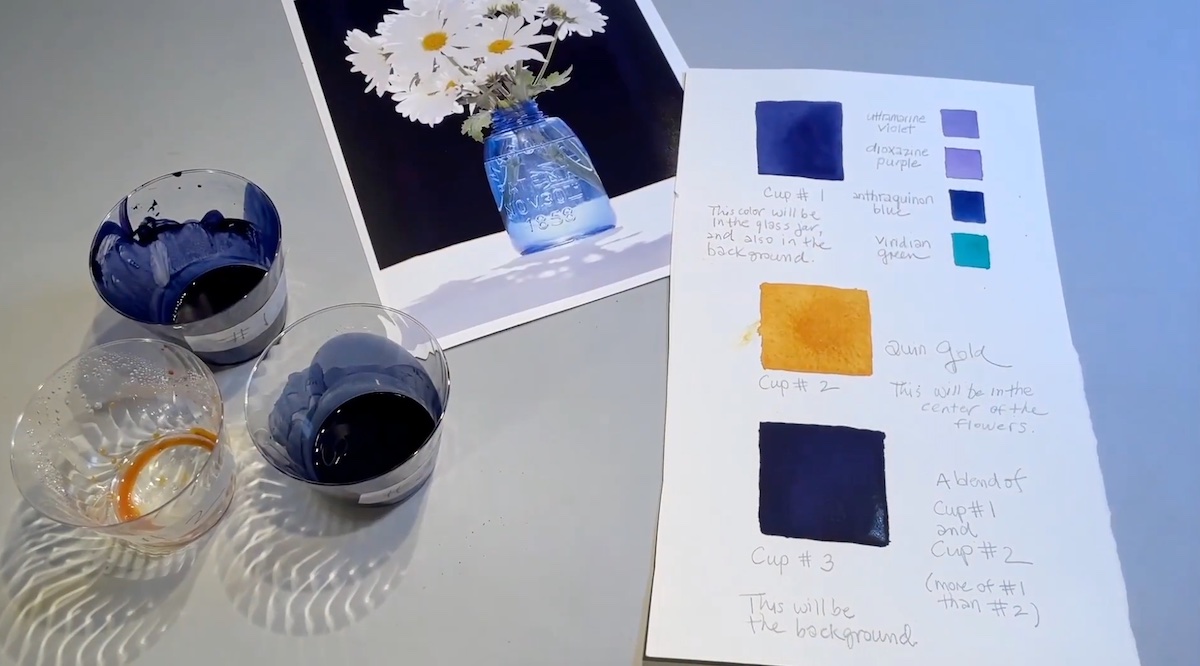
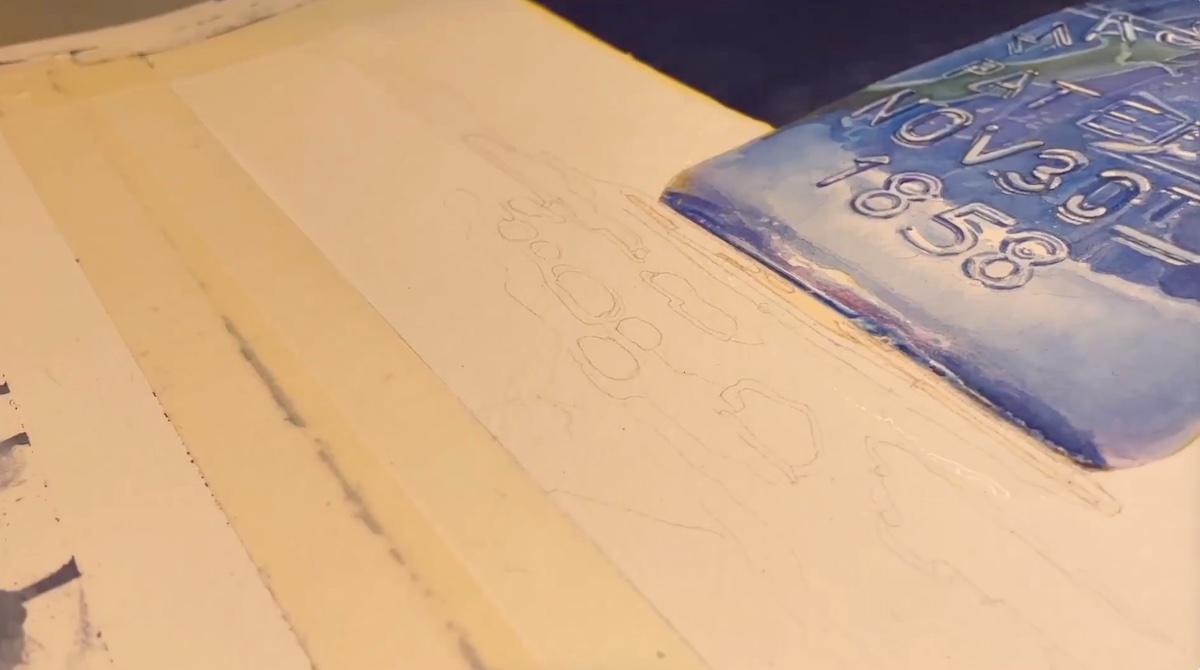
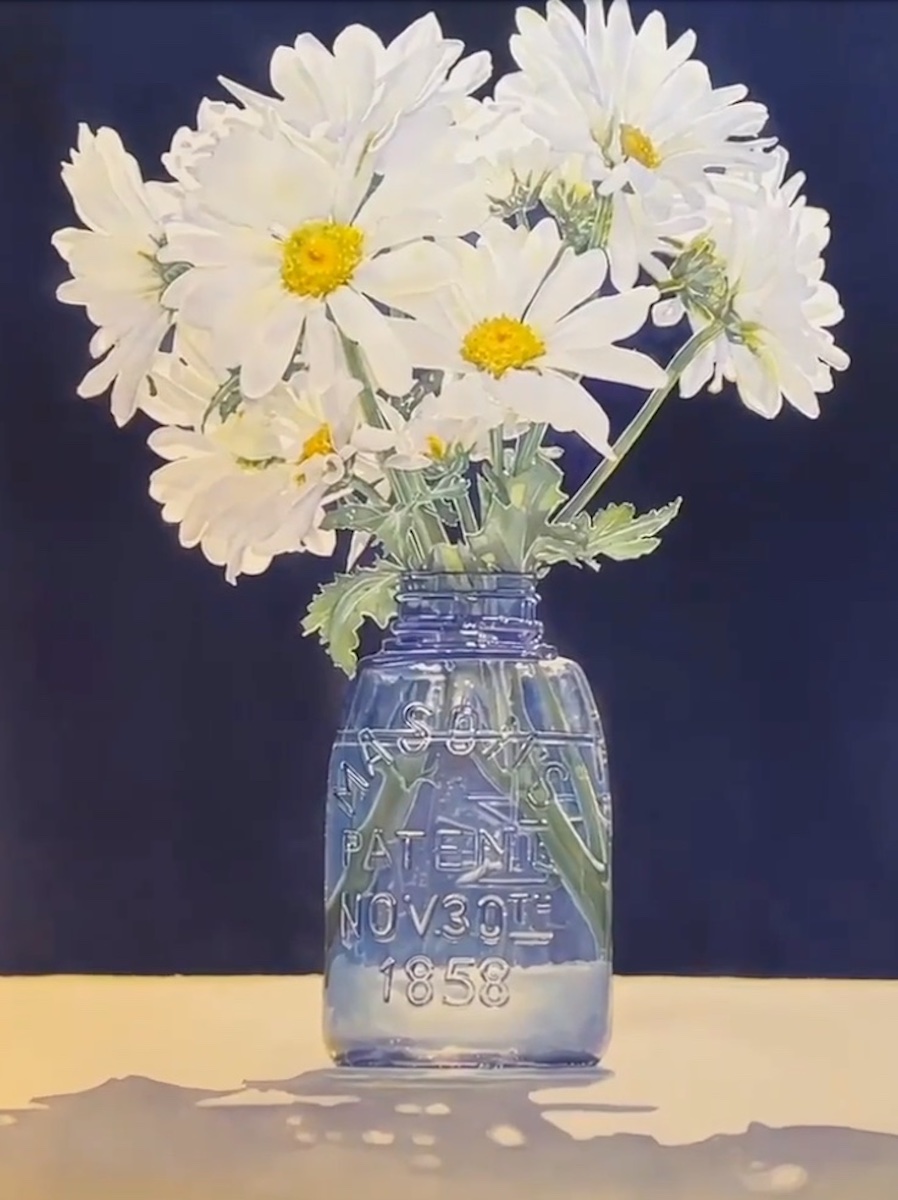
The last faculty member of the day, certainly not in order of importance given her résumé, was Irina Roman: a highly regarded teacher from the Massachusetts College of Art and Design. With the typical approach of someone who teaches art on a daily basis to a diverse audience, Roman presented all the materials she routinely uses in executing a still life composition, which for the demonstration session consisted of a large glass vase filled with daisies and with tone-on-tone front lettering. With the many years of experience behind her, the artist also provided practical technical suggestions that include, for example, diluting the color in practical numbered glasses, which are useful in the compositional process and in the management of the colors he spreads by zones starting from the background, made with an intense homogeneous color veered on the blue-purple tone and which she spreads by exploiting the gravitational force of the pigment combined with water. To be able to move with complete freedom and without having the fears of covering unwanted areas, Roman made use of the watercolor mask, which she spreads previously on the parts not immediately affected by the color and needing to remain white, and which to show the three-dimensionality of the objects she refines at the end of the composition to maintain the correct perspective and tonal scale.
It was an Eric Rhoads, a big fan of change, who presented all the news in the Streamline Publishing universe. News that concerns the beginner’s day, which starting next year will take on a new name: Essential Tecnicques Day, more in keeping with the beneficiaries of the pre-event training day in which not only beginners participate. Essential Tecnicques Day will anticipate the actual convention by two weeks to allow participants to explore topics in more depth ahead of the official convention, which will no longer be at the end of the week but mid-week.
Miami Niche will be waiting for you tomorrow to explain the second day of the convention. For those of you who have not yet done so, register for the fourth edition of Waterecolor Live, which will be online Jan. 24-26, with Essential Tecniques Day scheduled for Jan. 11, 2024.
(on the title, a frame from Patricia Guzman’s portrait demonstration)
